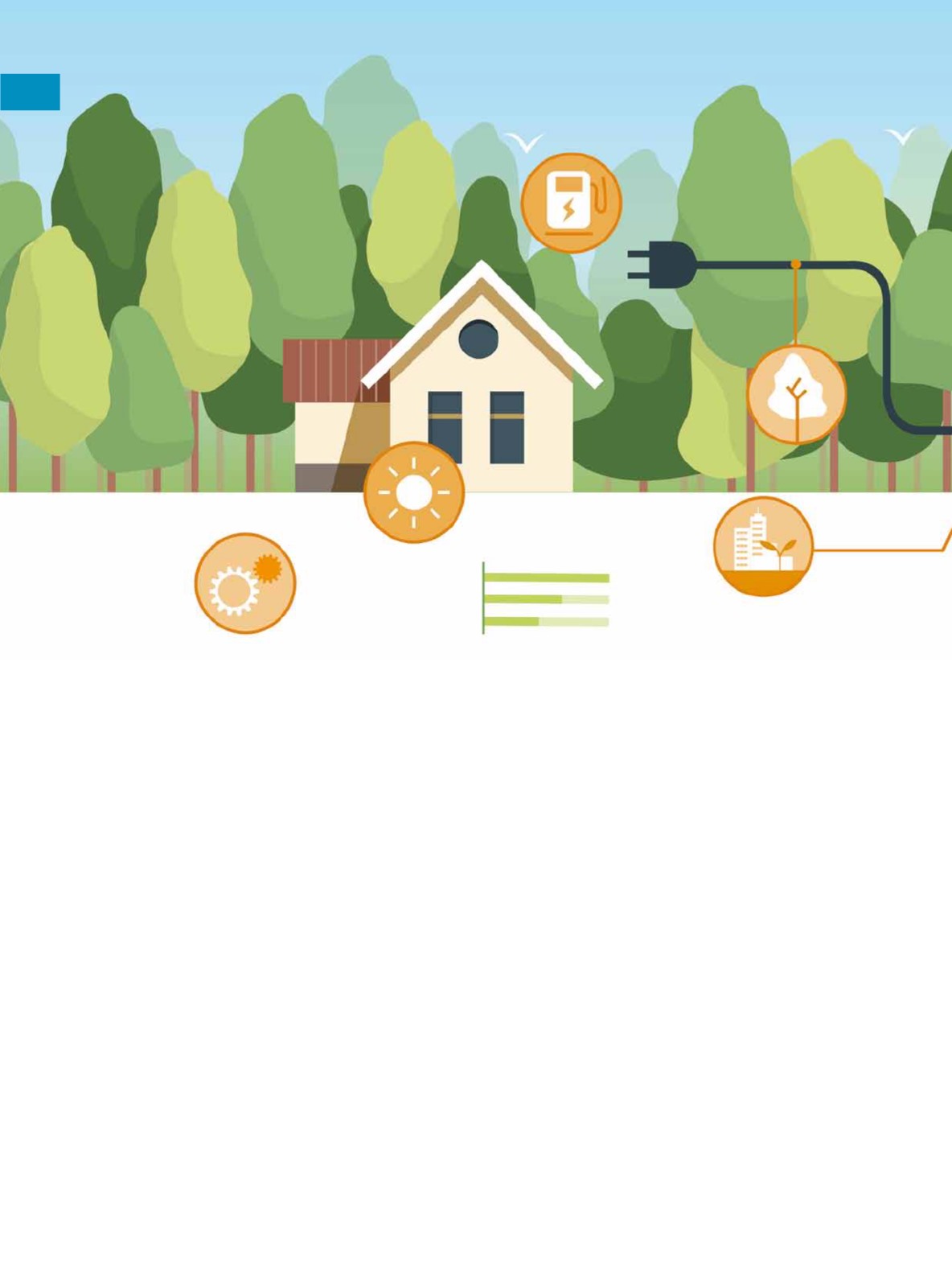
light and radar, LiDAR is a means of
using lasers to take images and store
them in a massive database. In this case,
UK Power Networks makes use of aircraft
with the LiDAR technology to fly over the
transmission network to create an image of
powerlines and anything around them.
Six years ago, the firm first started
looking at the technology, but deemed it
not quite ready for prime time in terms of
costs and proven technology. A second
look led to a trial in 2013, scanning two
parts of the network. The successful
experiment led to the system being
implemented across the entire network.
The aircraft does the heavy lifting and
provides the overhead vantage point that
allows the LiDAR to work. The scanning
provides masses of data. Almost too much
– the biggest challenge in implementation
was updating the asset management
database to take on the huge amounts of
new, detailed data that is now available.
The impact on business is real. Martin
Peters, Tree Manager at UK Power
Networks, explains, “From a survey
perspective, it would take about three
years to foot patrol the network. But
by using the LiDAR technology, all of
our network can be covered in three
months with much less disturbance to
stakeholders. And it’s much safer from
an injury perspective for the many staff
that had to venture across rough land,
rivers and ditches.”
In the future, the technology may
allow for identifying specific vegetative
species and their current growth rates,
making pruning schedules even more
cost-effective. Other power providers in
the UK have taken note and at least two
have followed UK Power Networks in using
this technology, according to Mr Peters.
EV-eryone is driving EVs
Operational efficiency has been a boon
for The Hongkong Electric Company
Limited (HK Electric) as it has become
one of the major users of Electric Vehicles
(EVs) in Hong Kong. But it has also kept
track of market developments, staying
ahead of its customers’ demands.
It has a growing fleet of EVs in Hong Kong,
with these now making up around 37 per
cent of its vehicles. The plan is to replace
old combustion engine vehicles as they
are retired until the whole fleet consists of
EVs. Various HK Electric offices’ car parks
are fitted with chargers and, as vehicles
are used in Hong Kong’s small area and
spend overnight in a parking bay, charging
and range is never a problem. With fewer
moving parts, the vehicles have less
downtime for repair, meaning they are on
the road much more often which lends to
greater operational efficiency.
HK Electric’s experience in running its own
operations is also enabling it to align itself
with government incentives for consumers
to use cleaner cars, and with consumer
preferences and spending trends.
HK going green
Hong Kong has possibly the highest
first registration tax on new cars in the
world. However, in a bid to reduce roadside
pollution, the Hong Kong government has
waived the tax on purely electric cars,
making them popular in the crowded city.
Their widespread adoption is now leading
to a demand for more charging stations.
HK Electric has responded to this market
demand and is helping to smooth the way
for those who would like to help improve
Hong Kong’s roadside air quality. It
launched 10 of its own free-to-use
<<
Sphere
#40
2016
18
Vehiculation Aspiration


